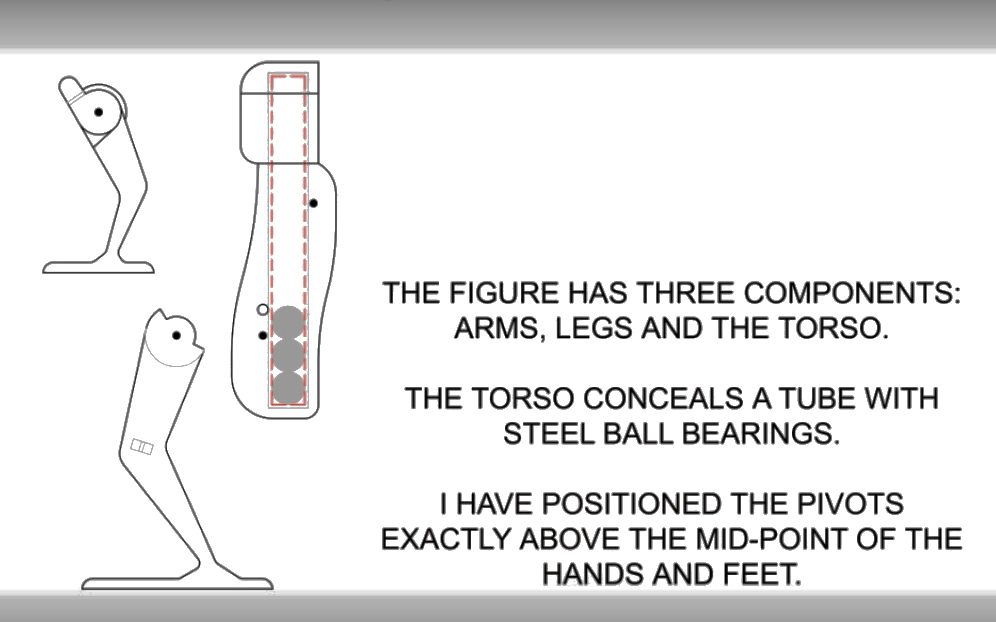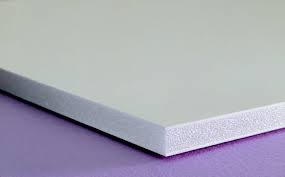What Materials to Use

Barry's video shows lines and sizes and angles, but says nothing about the materials to use.
First, I thought it is important to keep the weight of the acrobat as low as possible, then later I realized it is not the most important.
I experimented with cardboard (not corrugated, but simple single ply paperboard or 'carton'), foam board and plywood. I finally succeeded making a working acrobat from each, but finally the plywood seemed the most practical. First, for the legs and arms I used thin (pine/fir) slats and plywood. The kind of wood the German figure is made of is simply unavailable for me.
I made my first figure from 4 mm plywood and it didn't work. Then, I thought it is too heavy and made the next figure from foam board and it worked! I was overjoyed seeing it tumble the proper way but it was still a very long way from final success. (Later, when I found out the little tricks, I fixed the first plywood model and I was able to make it work, as well.) Next, I made some from cardboard. Their bodies were cardboard and their arms, hands, legs and feet were slats. Then, I glued foam pieces on their bodies to make them more human like. (I used XPS polistirol which is widely used at constructions.) This design was OK, but I wasn't completely satisfied by it. I simply could not make a second one work!

XPS polistirol


Foam board
Acrobat's body made of cardboard. Legs and arms made of slats, traverses are made of bamboo skewers. Polistirol is added for a more human shape. (He is called Bike and works wonderfully.)
Finally, I made the figure from 4 mm plywood (body and extremities as well) and it worked better. This figure is finally looks even more like Barry's figure!
These are my first attempts. Some work better, some poorly.